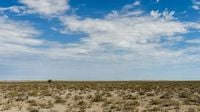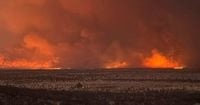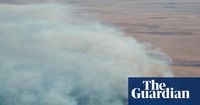Etosha National Park, a crown jewel in Namibia’s tourism and conservation landscape, has faced its most devastating wildfire in recent memory, with flames scorching more than a third of its vast terrain and threatening the park’s unique ecosystem, local communities, and vital tourist infrastructure. The fire, which began on September 22, 2025, in the park’s southwestern region, quickly ballooned into a crisis of national concern, drawing in hundreds of soldiers, helicopters, and a groundswell of community volunteers in a frantic bid to bring the blaze under control.
According to Namibia’s Ministry of Environment, Forestry and Tourism, the fire has consumed approximately 775,163 hectares (about 1.9 million acres), which amounts to roughly 34% of Etosha’s total expanse. The destruction extended beyond park boundaries, with an additional 171,098 hectares of grazing land outside the reserve also burned, impacting regions bordering Angola and threatening the livelihoods of local farmers. The park, one of Africa’s largest at 22,935 square kilometers, is renowned for its sweeping salt pans visible from space and is home to 114 mammal species—including elephants, lions, giraffes, and critically endangered black rhinos—as well as hundreds of bird species.
Officials believe the fire likely started at a charcoal production site on a commercial farm bordering the park, a suspicion echoed in statements from both the environment ministry and the president’s office. While wildfires are not uncommon in Namibia’s arid savannah, experts and government sources note that this blaze was supercharged by strong winds and parched vegetation, typical of the country’s driest season. These conditions allowed the flames to race across the landscape, overwhelming initial containment efforts and leaving behind swathes of blackened earth and fleeing wildlife.
Environment Minister Indeleni Daniel confirmed, “Strong winds and dry vegetation were partly to blame for the rapid escalation of the blaze.” The government acted quickly, mobilizing 540 soldiers and deploying helicopters to reinforce local firefighting units. Trucks equipped with water tanks and a steady stream of volunteers from neighboring communities joined the effort, underscoring the magnitude of the threat and the urgency of the response. Prime Minister Elijah Nghurare Manongo, addressing the nation on September 29, struck a note of cautious optimism: “When there is teamwork, there is no task we cannot overcome.”
Despite the fire’s speed and scale, officials report that no human casualties have occurred—a relief in the face of such a fast-moving disaster. However, the toll on wildlife remains uncertain. At least nine antelope deaths have been confirmed, and the full extent of animal losses may not be known until comprehensive aerial surveys are completed. The Ministry of Environment, Forestry and Tourism acknowledged, “The ecological damage inside ENP is significant.” The park’s rich biodiversity—already under pressure from climate change and poaching—now faces a new and formidable challenge.
Etosha’s importance extends far beyond its boundaries. The park draws around 200,000 tourists each year, serving as a cornerstone of Namibia’s tourism industry and a vital source of income for local communities. Its saline lake, spanning 4,730 square kilometers, is a magnet for migratory birds, including flamingos, and is a defining feature of the Namibian landscape. The destruction of grazing land and habitats has ripple effects on both wildlife and the people who depend on the park’s resources for their livelihoods.
As the crisis unfolded, the Namibian government faced criticism from some quarters over its preparedness and response. Opposition MP Likando Rodrick voiced frustration, arguing that authorities should have been better equipped to prevent such extensive damage and calling for more robust long-term fire management strategies. In response, an emergency meeting on September 27 led to the decision to send more than 500 troops to bolster the firefighting effort, joining police, volunteers, and local farmers already battling the inferno on the ground.
By September 28, officials announced that the main fires within Etosha and in the surrounding grazing lands of Oshikoto, Oshana, and Kunene regions had been contained, though some hotspots continued to smolder under watchful eyes. The presidency emphasized, “The fire poses a significant threat to the biodiversity, wildlife and livelihood of the communities in the affected areas,” but added, “thankfully, no human casualties have been reported.”
Etosha’s history with fire is complex. According to NASA and local studies, wildfires—often sparked by lightning—were once a rare, roughly once-a-decade occurrence. However, in recent years, both the frequency and scale of these fires have increased, a trend some researchers attribute to shifting climate patterns. Prescribed burning, a method of controlled fire used to clear dry brush and maintain ecosystem balance, has been employed to prevent catastrophic events like those seen in 2011, when fires destroyed vast areas of the park and claimed dozens of animal lives. Experts caution, though, that such practices must be managed carefully to avoid unintended consequences.
Namibia, home to what is believed to be the world’s oldest desert, has long been a vocal advocate for stronger global climate protections. The government’s swift mobilization of resources in response to the Etosha wildfire reflects both the scale of the threat and the country’s commitment to safeguarding its natural heritage. Yet, as the immediate danger recedes, the challenge of recovery and prevention looms large. Authorities are now intensifying monitoring and assessment efforts, using aerial photography to map the full extent of the damage and guide restoration plans.
For the communities living in Etosha’s shadow, the fire is a stark reminder of the delicate balance between people, wildlife, and the environment. As Namibia rallies to repair the scars left by the flames, the lessons learned may shape the future of fire management not only in Etosha but across Africa’s protected landscapes. The hope, echoed by officials and conservationists alike, is that through teamwork, vigilance, and science-based stewardship, Etosha’s unique ecosystem can be preserved for generations to come.
With the fires now largely contained, Namibia faces the daunting task of rebuilding and reimagining how to protect one of its most treasured natural wonders in an era of mounting environmental challenges.



